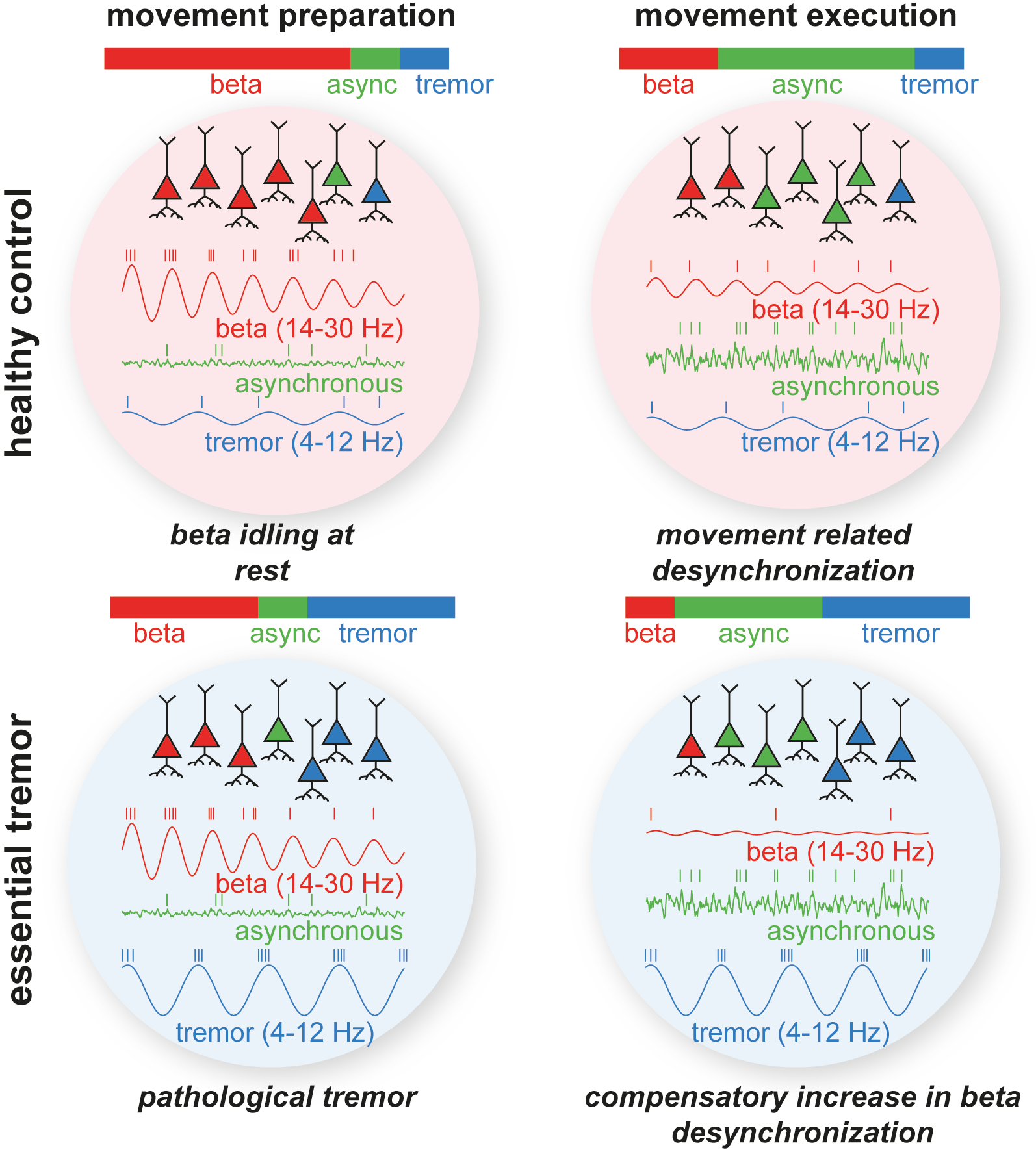Essential tremor disrupts rhythmic brain networks during naturalistic movement.
West et al. studied brain activity in patients with essential tremor, a condition that causes involuntary shaking. They discovered that the brain alters its movement-related activity to compensate for abnormal brain activity linked to tremor. These findings could help improve future brain stimulation treatments for tremor management.
Essential Tremor (ET) is a very common neurological disorder characterised by involuntary rhythmic movements attributable to pathological synchronization within corticothalamic circuits. Previous work has focused on tremor in isolation, overlooking broader disturbances to motor control during naturalistic movements such as reaching. We hypothesised that ET disrupts the sequential engagement of large-scale rhythmic brain networks, leading to both tremor and deficits in motor planning and execution. To test this, we performed whole-head neuroimaging during an upper-limb reaching task using high-density electroencephalography in ET patients and healthy controls, alongside optically pumped magnetoencephalography in a smaller cohort. Key motor regions-including the supplementary motor area, premotor cortex, posterior parietal cortex, and motor cerebellum-were synchronized to tremor rhythms. Patients exhibited a 15 % increase in low beta (14-21 Hz) desynchronization over the supplementary motor area during movement, which strongly correlated with tremor severity (R = 0.85). A novel dimensionality reduction technique revealed four distinct networks accounting for 97 % of the variance in motor-related brain-wide oscillations, with ET altering their sequential engagement. Consistent with our hypothesis, the frontoparietal beta network- normally involved in motor planning-exhibited additional desynchronization during movement execution in ET patients. This altered engagement correlated with slower movement velocities, suggesting an adaptation towards feedback-driven motor control. These findings reveal fundamental disruptions in distributed motor control networks in ET and identify novel biomarkers as targets for next-generation brain stimulation therapies.

2025. Neurobiol Dis, 207:106858.
2025. Mov Disord (e-Pub ahead of print).
2024. Brain (e-Pub ahead of print).
2021. J Neural Eng, 18(4):046023.
2021. Mov Disord, 36(4):863-873.